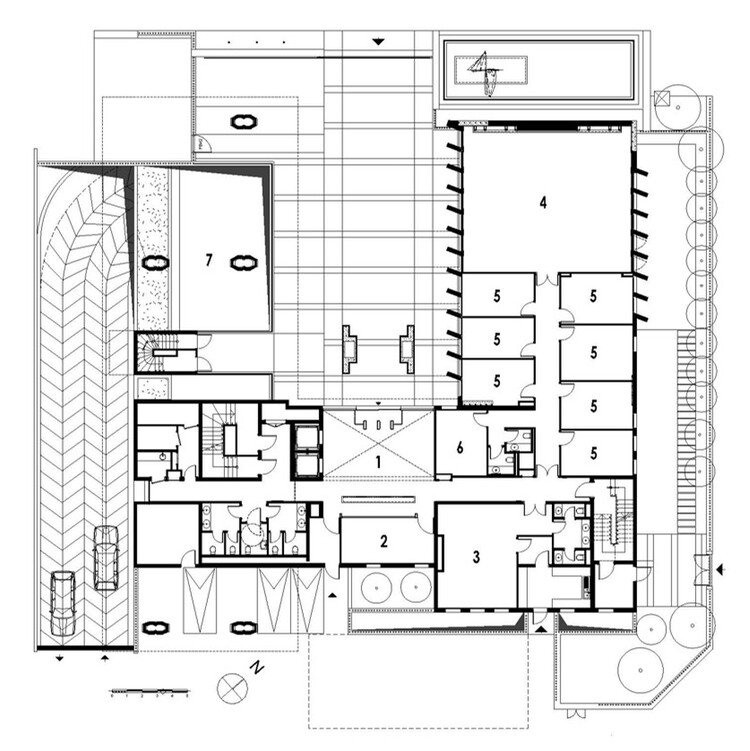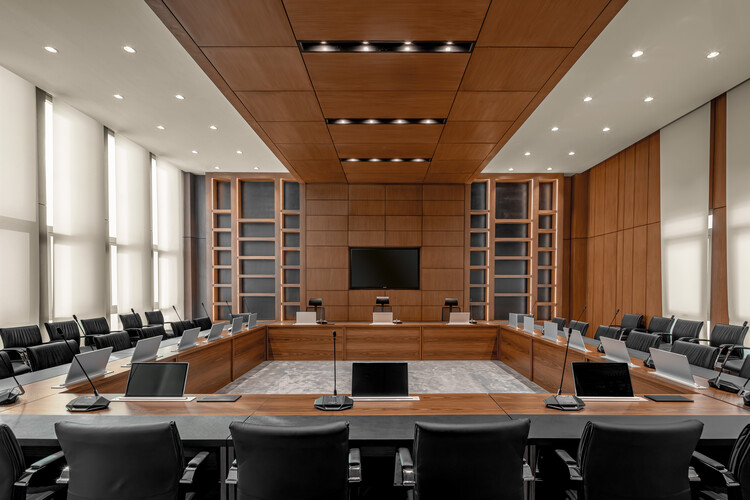
-
Architects: PRISM ARCHITECTURE & KD ARCHITECTURE
- Area: 2800 m²
- Year: 2024
-
Photographs:Alessio Mei
-
Lead Architects: Sadik Adil, El Hassan Nahla, and Dendane Kamilia

Text description provided by the architects. PRISM Architecture & KD Architecture, has crafted the award-winning design for the Siège du Conseil de la Concurrence, a landmark office building blending contemporary efficiency with Moroccan architectural symbolism. Winner of the Young Moroccan Architect Award 2024 in the "Best Office Building" category, the project stands as a model of human-centered and environmentally respectful design.

Rooted in Moroccan architectural heritage, the design emphasizes clarity, sobriety, and symbolic expression. The Mechwar, a central alley inspired by traditional Moroccan pathways, serves as a key organizing element, leading visitors from the main entrance to various core spaces. This layout fosters both visual and functional transparency.



The architectural language reflects a commitment to spatial hierarchy, harmonious site integration, and energy efficiency, aligning with the building's institutional role and modern performance standards. The volumetric composition consists of three interlocking entities: the multipurpose hall, and two wings housing the administrative offices. The design features an L-shaped floor plan, which optimizes circulation and fluid movement of both personnel and visitors.

The main entrance, marked along Avenue Azaytoune, is characterized by the Mechwar and a reflective water feature, enhancing the symbolic presence of the space. Secondary VIP access is located on Avenue Mohamed Al Yazid, while service and delivery functions are discreetly managed from Rue Tecomaria.



The central hall ensures openness with a transparent visual axis through the Mechwar, placing the reception desk centrally for intuitive wayfinding. The multipurpose hall, VIP lounge, and library are clustered in a singular volume for operational efficiency. A poteaux-poutres (post and beam) structural system was chosen for its cost efficiency and modular clarity, repeated across all levels for streamlined construction. The use of concrete, glass, and reflective water elements reinforces both structural strength and visual elegance.

The design integrates a vertical core system, housing technical rooms, sanitary spaces, and circulation paths, ensuring adaptability for future expansions or reconfigurations. The initial challenge involved balancing efficient circulation with the complexity of merging public and staff operations. Adjustments, such as the relocation of the multipurpose hall, ultimately enriched the volumetric balance and functional performance. The project successfully reconciles cultural symbolism with modern workspace demands, setting a new benchmark for institutional architecture in Morocco.





















